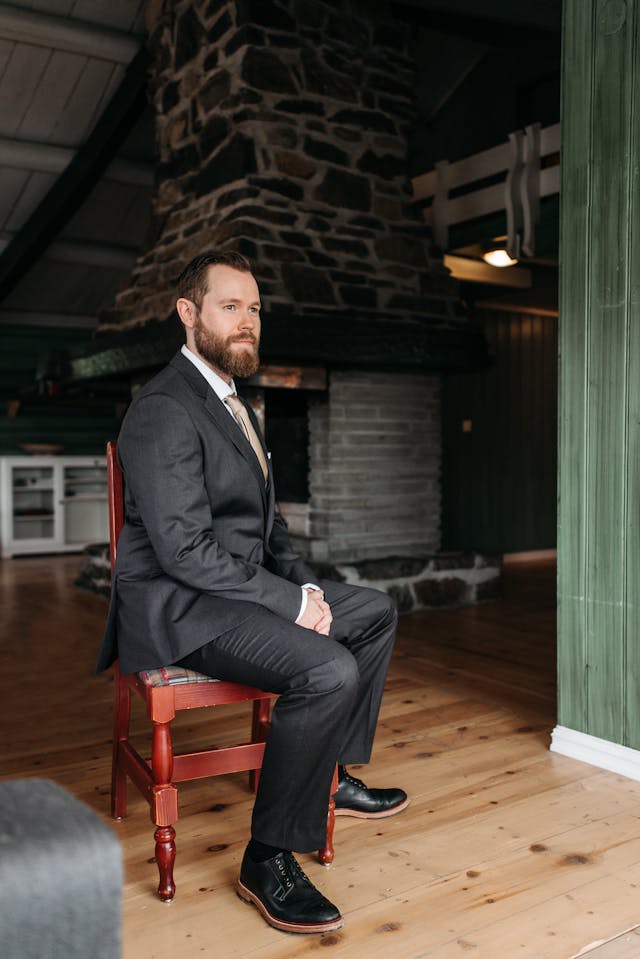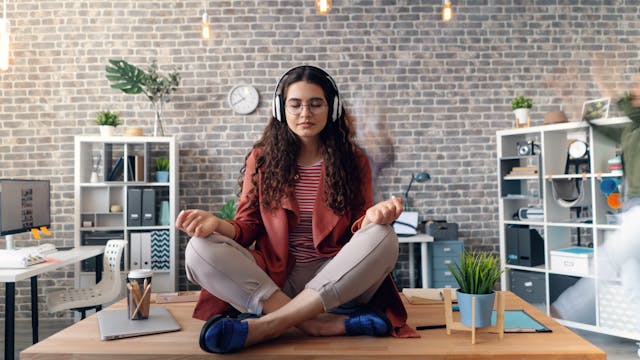Meditation can bring peace and clarity to our busy lives. Finding the right posture is important for a comfortable and effective practice. Let’s look at different meditation positions to help you find what works best for you.
Key Takeaways
- Proper posture helps focus and comfort during meditation
- There’s no perfect position – find what works for you
- Try different positions and props for support
- Regular practice matters more than perfect posture
- Adjust positions to fit your body’s needs
Why Posture Matters in Meditation
Good posture isn’t just about looking good – it’s important for a focused and comfortable meditation session. Sitting with proper alignment helps us breathe easier and stay alert. But remember, there’s no one right way. The best position is one that feels good for your body and keeps you comfortable.
Proper posture during meditation helps with:
- Deeper, easier breathing
- Staying alert and awake
- Reducing distracting physical discomfort
- Promoting better energy flow in the body
Common Seated Meditation Positions
Many people think of sitting cross-legged when they imagine meditation. These are popular, but not the only options. Here are some common seated poses:
Cross-Legged Positions
1. Easy Pose (Sukhasana): This is the simple cross-legged position you might remember from school. It’s good for beginners and gives a stable base.
2. Half-Lotus: One foot rests on the opposite thigh, while the other stays on the floor. It’s a bit harder but can be more stable. It can help improve hip flexibility over time.
3. Full Lotus: Both feet rest on opposite thighs. This is the most stable but also the trickiest for many people. It needs a lot of hip flexibility and should be tried slowly.

Kneeling Positions
Seiza is a traditional Japanese kneeling position. You can try it with or without a cushion for support. It’s great for those who find cross-legged poses uncomfortable. Seiza can help improve posture and is often easier on the knees than cross-legged positions.
Chair Sitting
Don’t forget about chairs! Sitting in a chair with your feet flat on the floor can be comfortable and easy for many people. It’s especially good for those with limited mobility or back issues. When using a chair, make sure your feet are flat on the ground and your back is straight but not stiff.

Check out our meditation practice category for more info on different techniques and positions.
Adapting Positions for Your Body
Not everyone can sit in a full lotus pose, and that’s totally fine! There are many ways to change meditation positions to fit your body:
- Use cushions or folded blankets to support your hips and knees
- Try a meditation bench if kneeling on the floor is uncomfortable
- Use a chair with back support if sitting on the floor isn’t possible
- Try different heights of cushions to find the best level for your hips
- Use a wall for back support if keeping your back straight is hard

Learn how meditation can help your health and find out more about adapting practices to your needs.
Helpful Props for Meditation
Sometimes, a little extra support can make meditation much easier. Here are some props that can help:
- Cushions and zafus: These can lift your hips and make cross-legged positions more comfortable
- Benches: Great for kneeling positions, taking pressure off your ankles
- Blankets and bolsters: Use these for extra padding or support where needed
- Yoga blocks: Can support knees or lift hips in seated positions
- Eye pillows: Help block out light and promote relaxation during lying meditation

New to meditation? Check out our guide on meditation for beginners to get started.
Finding Your Perfect Position
The best way to find your ideal meditation posture is to try different things. Experiment with different positions and see what feels most comfortable. Here are some tips:
- Start with short sessions to build up your “sitting stamina”
- Listen to your body – if something hurts, adjust or try a different position
- It’s okay to move or adjust during your practice
- Notice how different positions affect your mental state and focus
- Try switching between positions to prevent stiffness in longer sessions

Once you’re comfortable with basic meditation, why not try loving-kindness meditation?
Beyond Sitting: Other Meditation Positions
While sitting is the most common way to meditate, it’s not the only option. Here are some alternatives:
- Standing meditation: Good for improving balance and body awareness
- Walking meditation: Combines gentle movement with mindfulness
- Lying down (corpse pose): Relaxing, but be careful not to fall asleep!
- Reclining meditation: A middle ground between sitting and lying down
- Moving meditation: Practices like Tai Chi or Qigong that include mindful movement

Want to improve your practice? Check out our tips on how to get better at meditation.
Staying Comfortable and Alert
Once you’ve found a comfortable position, staying focused can still be tricky. Here are some tips to help:
- Focus on your breath to stay present
- Make small adjustments if you feel uncomfortable
- Find a balance between relaxation and alertness
- Use a gentle gaze or soft focus to maintain concentration
- Try progressive relaxation to release tension in your body

Are you a student looking to reduce stress? Learn meditation techniques for students to boost focus and calm.
Overcoming Common Challenges
Even experienced meditators face obstacles. Here are some common issues and how to deal with them:
- Physical discomfort: Don’t ignore pain – adjust your position or use props
- Sleepiness: Try opening your eyes slightly or meditating at a different time of day
- Distractions: Notice them without judgment, then gently return your focus to your breath
- Restlessness: Include short movement breaks or try a more active form of meditation
- Mind wandering: Use techniques like counting breaths or body scanning

Curious about the long-term benefits? Learn how regular meditation can improve your life.
Wrapping Up: Your Meditation Journey
Remember, finding your ideal meditation posture is personal. What works for others might not work for you, and that’s okay. The most important thing is to find a position that lets you be comfortable and focused.
Don’t be afraid to try different postures and props. With time and practice, you’ll find what works best for your body and mind. The key is consistency – even a few minutes of daily practice can make a big difference.
As you continue meditating, keep in mind that your ideal posture may change over time. Be open to adjusting your practice as your body and needs change. The goal is to create a sustainable practice that supports your overall well-being and personal growth.
Need some extra help? Check out our recommendations for meditation apps to support your practice.
Happy meditating!




